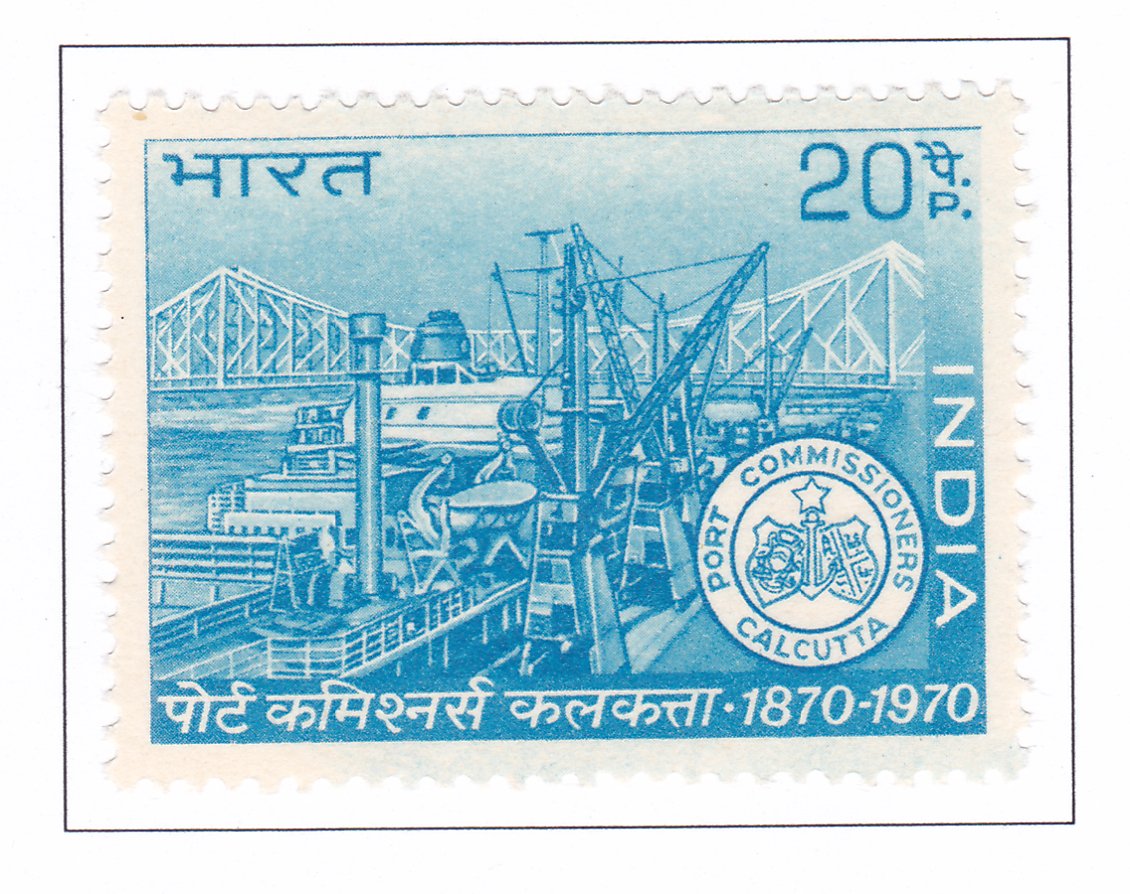Calcutta Port Commissioners (Centenary)

Technical Data
| Stamp Set | Centenary Series |
|---|---|
| Date of Issue | October 17, 1970 |
| Denomination | 20 nP |
| Quantity | 3,000,000 |
| Perforation | 13½ x 13 |
| Printer | Security Printing Press, Nashik |
| Watermark | No Watermark |
| Colors | Greenish blue |
| Catalog Codes |
Michel IN 508 Stamp Number IN 524 Yvert et Tellier IN 307 Stanley Gibbons IN 622 |
| Themes | Anniversaries and Jubilees | Bridges | Ports |
The origin and development of Calcutta, the first city in India, are intricately linked with the growth of Calcutta Port. It can be said that the city emerged from the port, with its roots tracing back to the 17th century when trade with Bengal attracted foreign adventurers. Job Charnock, the English Agent of the East India Company, played a pivotal role in selecting the site for Calcutta around 1690, with the permission of the then Mughal Emperor, Aurangzeb. The port and the city gradually evolved from these initial settlements along the left bank of the River Hooghly.
The transformation of Calcutta into a modern port commenced in the second half of the 19th century. Today, it stands as the premier port on the Eastern Coast of India, handling a significant volume of dry cargo and commanding a vast hinterland comprising several states and neighboring countries. Despite the navigational challenges posed by sandbars and sharp bends in the river, the port is equipped with dredged channels and navigational aids for safe navigation, with compulsory pilotage for ships.
The affairs of the port are overseen by “The Commissioners for the Port of Calcutta,” a statutory body constituted under various acts. Over the years, the port has witnessed significant infrastructural developments, evolving from primitive screw pile jetties to modern facilities. Currently, it offers numerous berths, jetties, and dry docks for handling various types of cargo and facilitating ship repairs.
The post-independence era saw further expansion and modernization of the port, with substantial investments made during various Five-Year Plan periods. Today, the port boasts the capacity to handle millions of tonnes of cargo annually, serving as a critical gateway for both imports and exports. It also generates substantial revenue and provides extensive warehousing and railway facilities.
To meet the challenges posed by larger ships, particularly tankers and bulk carriers, the Calcutta Port Commissioners have undertaken the Haldia Dock Project downstream of Calcutta. This project aims to provide deep draught berths and modern equipment for efficient loading and unloading, ensuring the port’s continued relevance in the changing maritime landscape.
As the Calcutta Port Commissioners celebrate their centenary, it marks a century of remarkable growth and development, with the promise of even greater prosperity in the future. The Posts and Telegraphs Department takes pride in commemorating this saga of growth by issuing a special commemorative stamp, acknowledging the port’s pivotal role in India’s maritime history.
